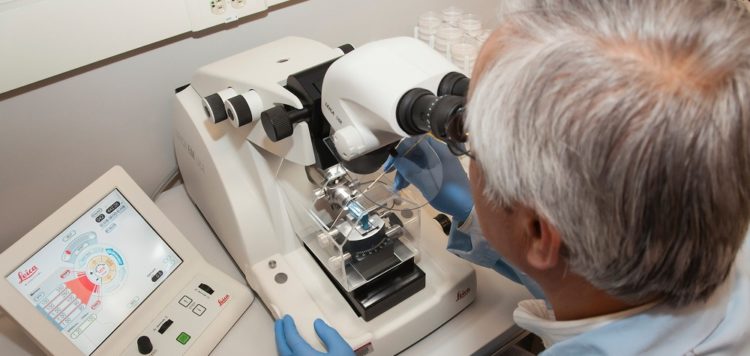The pharmaceutical sector is highly capital-intensive and competitive, with new technologies and innovations being developed all the time. As the industry transitions to the digital age, emerging inventions are transforming the way drugs are developed, tested, and marketed. These technologies include systems biotechnology, big data, curative therapies, gene editing, bioprinting, blockchain, and artificial intelligence (AI).
In this article, we will discuss each of these trends and their potential impact on the pharmaceutical industry.
Systems Biology
Systems biology is responsible for some of the most significant advances in human health and environmental sustainability research. Microbes, plants, animals, and entire ecosystems all perform unique functions in the natural world, which is a highly interconnected system. A comprehensive approach is needed to understand these living organisms and how different biological species interact at different levels. For example, every human being is a unique system — made up of organs, tissues, cells, molecules, as well as bacteria and other organisms that dwell on the skin and inside the digestive system.
Systems biology is the study of these components and their interactions with each other. Systems biology combines various fields including biology, computer science, engineering, bioinformatics, and physics to understand how these systems interact and change over time. This information can be used to develop solutions to the world’s most pressing health and environmental problems. Systems biology is already having a significant impact on fields such as health and agriculture, but there are many more opportunities to be discovered.
Below are a couple of such examples:
- Increased crop yields through a better understanding of how plants interact with their environment.
- Disease modeling to discover new treatments.
- Developing better biofuels and bioproducts from food waste and agricultural waste.
- New environmental controls over nutrients and pollutants.
Big Data Analytics
The pharmaceutical sector uses this technology to evaluate enormous amounts of historical data as well as real-time events (social media, IoT sensors, and patient medical data) in order to formulate predictions or suggestions. Once developed, these predictive models can be directly applied to drug development processes.
Here’s how big data analytics is being used in drug discovery, clinical trials, and research and development:
Drug discovery and development – Big data analytics plays an important role in medication and vaccine formulation. Medical researchers can use predictive modeling to discover new cures and predict drug interactions, toxicity, and inhibition. This speeds up the entire process and saves more time and money.
Clinical trials and precision medicine – Big data analytics helps pharma companies recruit the right patients for clinical trials. By using statistics such as genetic information, personality traits, and disease status, firms are able to locate suitable individuals who may not experience serious side effects and show better results during the study. This not only increases the success rate of the drug but also makes it more effective. Big data analytics also benefits precision medicine, in which illnesses are diagnosed and treated using relevant data on a patient’s genetic, behavioral, and other characteristics. Pharma companies can use this strategy to develop personalized medicine tailored to a specific patient’s genes and current lifestyle.
Research and development – One of the key benefits of big data analytics in the pharmaceutical sector is the ability to collect vast amounts of historical and real-time data. This data is generated at various stages of the value chain, from medication research to real-world applications. This helps big data analytics to gain important insights for research and development.
Curative Therapies
Curative therapies are becoming increasingly popular as they are proven to be more effective than conventional treatments. Curative or therapeutic care refers to time-limited treatments and therapies administrated to a patient to cure a disease or condition. They can help eliminate the symptoms of the disease by correcting the underlying issue permanently or semi-permanently. Even when there is no known cure, curative therapy can aid in reducing the course of sickness—for example, a medication that a patient must take for the rest of their life to control symptoms or disease progression.
Examples of curative care include:
- Antibiotics for bacterial infections
- Chemotherapy or radiation therapy for cancer
- Cast for a broken bone
- Dialysis treatment for kidney failure
- Surgery for appendicitis
- Acupuncture
- Dietary programs for certain conditions
Gene Editing
Gene or genome editing is a novel technology that can help treat diseases by manipulating an organism’s DNA, and pharmaceutical companies are already looking into its potential. Gene editing has the ability to repair or replace defective genes with healthy variations, perhaps reducing disease progression. Cells can be modified within the patient’s body (in vivo)—using vectors to transport the genes—, or in a laboratory (ex vivo). CRISPR-Cas9 is one of the most well-known gene editing technologies.
CRISPR-Cas9 was derived from a naturally occurring gene editing system that bacteria use as an immune response. When these bacteria become infected with viruses, they capture small pieces of the viruses’ DNA and insert them into their DNA in a specific pattern to form CRISPR arrays. Bacteria can “remember” viruses using CRISPR arrays (or closely related ones). When the viruses attack again, the bacteria release RNA segments from the CRISPR arrays that recognize and bind to specific parts of the viruses’ DNA. The bacteria then use Cas9 or a similar enzyme to cleave the DNA and render the virus nonfunctional. Gene therapy has the potential to treat a variety of genetic problems such as cystic fibrosis and hemophilia, as well as cancer, heart disease, diabetes, and AIDS. CRISPR has seen tremendous growth and is being used to accelerate drug discovery.
Bioprinting
Bioprinting is the process of creating 3D copies of biological tissues and organs using 3D printing technology. The ability to print personalized medications for implants and therapeutic tissues could transform the pharmaceutical industry. Drugs can be tailored in terms of dosage, delivery mode, and side effects. Patients would no longer need to take multiple tablets or injections each day, and would be able to avoid the potential health risks associated with traditional drug-delivery treatments such as surgery or radiation therapy. Bioprinting is also used to create surgical models, regenerate skin and tissue, molds for titanium implants, cranial implants, prostheses for amputees, dental crowns, and bridges.
Blockchain
A major advantage of using blockchain technology in the pharmaceutical industry is transparency. Every transaction on the blockchain is traceable and easy to track, which allows the pharmaceutical sector to see how their money has been spent and whether there was any wrongdoing involved. Blockchain allows healthcare practitioners and patients to access medical records while also improving the supply chain, clinical trial data reporting, vendor credentialing, drug pricing strategy tracking, and so on. This transparency makes it easier for patients to trust drugs and manufacturers, leading to greater confidence in the system as a whole.
Another important benefit of using blockchain technology in pharma is security — since data on the blockchain cannot be altered or deleted without being detected, it creates a much more secure environment than traditional database systems. This contributes to stopping the trade of counterfeit medicines, which enter the pharmaceutical supply chain and kill thousands of patients every year. Blockchain is a promising alternative for tracking and securing the pharmaceutical transaction ecosystem due to the digitalization of transactions.
Artificial Intelligence
The evolution of artificial intelligence has led to an improvement in drug discovery and development in the pharma industry. Based on new clinical studies and patient data, AI can identify side effects quicker than humans. As AI evolves, it will be able to help clinicians make better judgments faster and identify potential adverse effects early.
Some key applications of AI in pharma include:
- Identifying potential new drug targets and develop better treatments.
- Assisting doctors in prescribing drugs more accurately, based on a patient’s individual history and needs.
- Finding the best candidate for a clinical trial based on their medical history.
- Analyzing large amounts of clinical data in order to improve diagnostic and treatment recommendations.
- Assisting pharmacists in dispensing medications in pharmacies or clinics.
Conclusion
In the near future, these technologies are likely to revolutionize the way the pharmaceutical industry functions by accelerating medication discovery, lowering prices, and eliminating the need for clinical trials. As new technologies make their way into mainstream practice, the healthcare sector will continue to change. Pharmaceutical companies must keep pace with these advancements and reevaluate their operations to improve public health through better products and solutions.






































